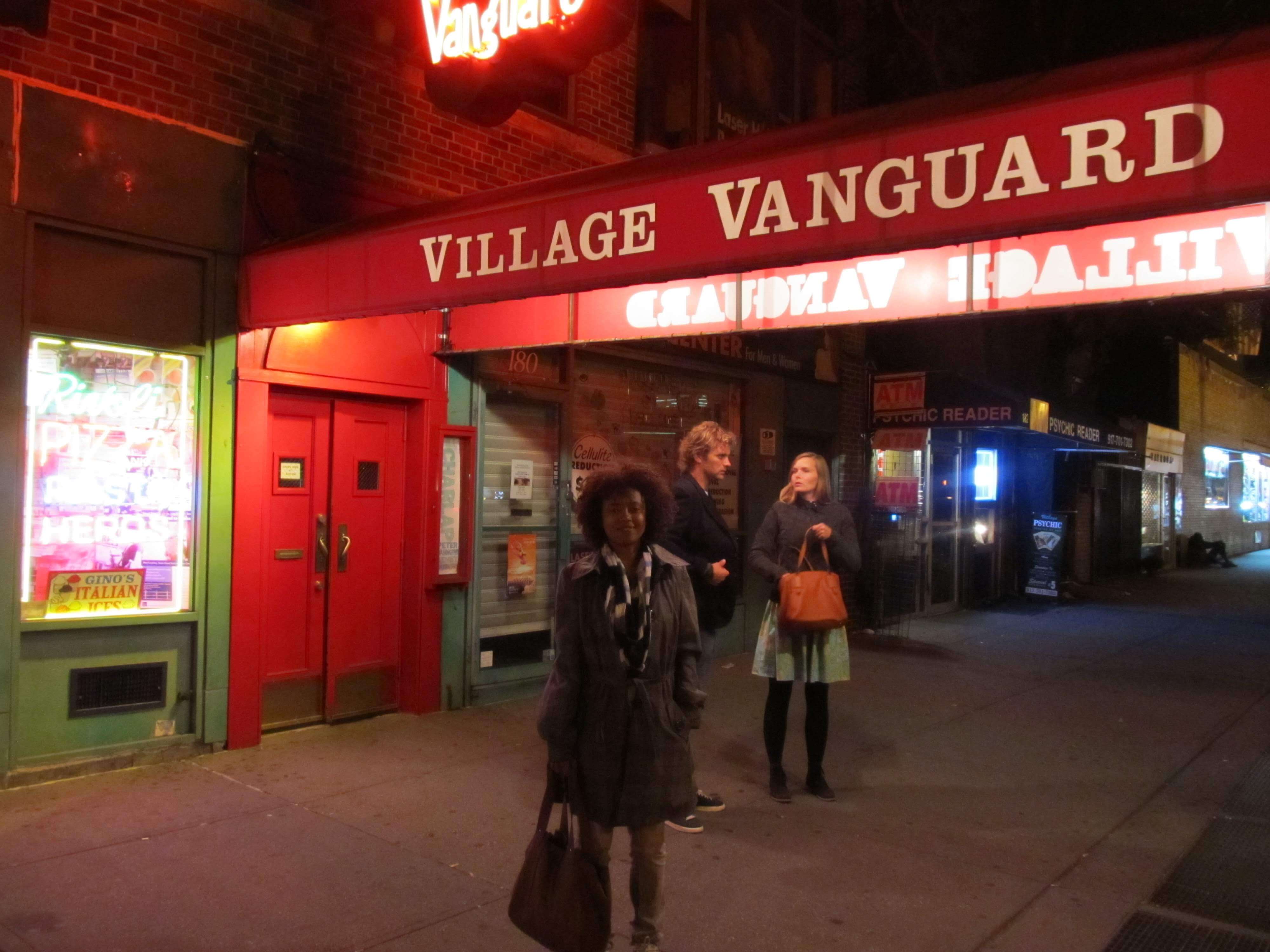Those who lived through the ’70s may recognize the title of this column as the signature line from the harrowing torture scene in the movie Marathon Man. Dr. Christian Szell (Laurence Olivier) drills into Babe’s (Dustin Hoffman) teeth, without anesthetic, while asking, “Is it safe?” Beyond the sheer pain, what makes the scene that much more excruciating is that Babe doesn’t know the answer.
Not that this is torture, but there’s something of the same fraught confusion facing the world of live jazz. The vaccination process is working its way through the population (your correspondent will be fully, safely inoculated while you are likely reading this) and New York City has already achieved impressive numbers, though at the edges there are troubling hints that the pace is slowing and that some people are foregoing their second dose, which I have to say is one of the stupidest, most antisocial, and destructive things I’ve seen in awhile—and yes I was awake during 2020 (for the record, my second dose of Moderna left me feeling zonked with low-level aches and fever the next morning, but that was nothing a nap, some ibuprofen, and lots of water couldn’t take care of).
Why write, again, about a pandemic in a jazz column, isn’t that a medical issue butting its way into a musical matter? It’s more than a medical issue, it’s a social issue, and the reason the pandemic has been so terrible here is that the United States, as a society, has decided to spend insufficient money on public health and the overall social safety net, and for a long time has committed to the ethos of “I’ve got mine, screw you,” and lest you think this is only the motto for people who watch Tucker Carlson on Fox News, the New York Times has so deeply internalized a stance against public spending that it regularly assumes, without any objective reasoning, that the budget deficit must determine every macroeconomic course of action.
Are we safe? Is it safe? Is it safe to head down to a tiny basement club like Smalls, or step into a cramped room like I-Beam, and catch a set of live jazz, which may include singers and horn players breathing in and expelling long, strong lungfuls of air at the listeners? It seems that, with some caveats, it will be; get vaccinated, wear a mask still, enjoy the tunes. Capacity will still be restricted at least through the end of this month—the relatively large (in jazz club terms) concert hall Roulette is selling limited numbers of tickets for jazz shows and other performances. There’s already been some test cases during the periods last year when limited indoor dining allowed some venues to present live music, as long as it was possible to classify it as accompaniment to a meal, like jazz brunch.
There is no apparent data on whether these situations spread COVID-19, but indoor dining in general turned out to be a bad idea, which was easy to predict for everyone except politicians.
There’s a big question about another kind of safety; is it safe to remain in business? I-Beam still has a website, but it hasn’t been updated since March of last year. Shapeshifter Lab, another excellent Gowanus venue, is in danger of closing, and is fund-raising to either maintain their current lease or find a new performing space. There’s a pandemic venue relief fund, the Shuttered Venue Operators Grant from the Small Business Administration, but it was late getting going and when the website was finally up for applications, in early April, it crashed.
As much as the new administration has been pushing the case, people and places need cash, lots of it, more of it, and as fast as possible. The macroeconomic picture is showing some small improvements, in the ambiguous sense that, while people are still filing unemployment claims, the pace of that has started to slow, finally dropping below the same levels experienced during the Great Recession for the first time in a whole year. This past year destroyed huge amounts of cash and people and places still need money, as hard as that may be for certain US senators to see.
You need cash, I need cash, musicians need cash. If we had cash, we could go to the club and some of our cash would end up in the pockets of the musicians. I have tried in earnest to buy music from Bandcamp this past year during their monthly Bandcamp Fridays, when the site waives fees and all the proceeds go to the musicians—I like to know the money I can spend is going to someone who is making something, and in the absence of live music that has been the most direct means this past year. As a substantial jazz aside, I recommend you check out two duo albums available at Bandcamp, Some Kind of Tomorrow by Mark Helias and Jane Ira Bloom, and Thunda, from Noah Preminger and Kim Cass. Both are sax/bass duet albums, both recorded entirely across the internet, with the musicians playing with each other from remote locations, and both are musically impressive in a way that you don’t take note of the circumstances. The gorgeous, meditative Some Kind of Tomorrow is one of the most emotionally expressive albums I’ve heard in a long time.
But back to the cash. As has historically been the case during economic calamities, those who have ended up having more, and those who don’t have ended up having less. When the landscape clears, Jazz at Lincoln Center will still be standing, as it very much has, but there will be no more Jazz Standard. Perhaps the club can resurrect itself someplace, but that’s going to take more of that cash.
Where will Shapeshifter Lab be, will there still be a Shapeshifter Lab? What about I-Beam? The Vanguard, Smalls, Mezzrow, have managed to hang on, that’s good news. But just as the jazz question here is a social one, so is it also a real estate one—who can afford to operate here?
Square footage matters, because there’s more jazz musicians per square foot in New York than any other place in the world, and they are the crème de la crème of the genre. If there is a lot of pent-up jazz action ready to explode in the city over the summer and fall, where will it be, where will it go?
The nonprofit Giant Steps Arts has been putting on live music in Central Park on Saturdays in good weather, and that you can stroll into the park and catch the likes of Jeremy Pelt, William Parker, Chris Potter, and James Brandon Lewis, for free, is a testament to the mind-boggling talent drawn to play jazz in New York City, and also an indication of just how hard it might be for these players, and hundreds more, to get gigs in a shrunken landscape. As long as live music can return, the musicians will likely find a way, as so much of their income comes from doing things in music other than playing at the Vanguard.
But the wonderful and much-missed Red Hook Jazz Festival was gone long before the pandemic hit, and that loss, and others, is felt acutely now.
Will there be enough cash to go around to make this all happen? Will there be enough space? Will it be safe?
Author
-

George Grella wrote the book on Miles Davis’ Bitches Brew. He write other stuff too. killyridols.substack.com/
View all posts
George Grella wrote the book on Miles Davis’ Bitches Brew. He write other stuff too. killyridols.substack.com/










